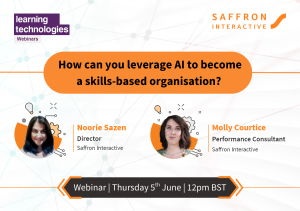When we’re building learning experiences it can be all too tempting to use our own experiences, beliefs and assumptions as a blueprint for how the user will react. It’s a big mistake and more prevalent in L&D than you might think. It’s called: ‘false consensus bias’.
Think of a food you really dislike. Then think of how you would describe it. Do you use phrases like ‘it’s disgusting’, or ‘it makes me gag’? We posit these statements as objective qualities of the food rather than our subjective experience of it – but many people will love the same snack that you find repulsive. This attitude doesn’t limit itself to food. In fact, studies have proven we’re extremely prone to assuming that our experience of something is universal – it’s known as the ‘false consensus bias’. Just consider how many times you’ve given your opinion on something by saying ‘it’s…’ rather than saying ‘I find it…’. When it comes to design, the danger is that we create something that we believe is ideal, but that really only takes our own preferences and experiences into account.
So, when developing digital learning experiences, it’s important to consciously put aside this bias so that effective online training is created with all target users in mind. In this way, we not only deliver what they need to know but also cater to a broad range of values, tastes and preferred learning methods. Recently I attended a workshop with Unity Works, ‘a specialist organisation supporting people with a learning disability to gain skills, achieve qualifications and secure jobs, so they can reach their full potential’. We asked service users to give their views on Create Your Own Future. It’s a platform developed by Saffron as part of Nesta’s CareerTech Challenge, in partnership with the Department for Education, that uses a ground-breaking AI-enabled virtual mentor to support users in developing their skills, making career plans and securing employment. Like all projects developed by Saffron, Create Your Own Future underwent rigorous accessibility testing, reaching the WC3 AA standard on the Web Content Accessibility Guidelines. But often, considering purely accessibility guidelines is not enough to ensure you are able to capture and not alienate your learners.

The feedback from the Unity Works cohort was incredibly positive – one Unity Works user went on to secure three job interviews after using the platform. But that isn’t to say there was no room for improvement. Some of the users had found our skills rating terminology difficult to get their heads around. In this part of the course, users were presented with a skill, for example “strategic thinking” asked to rate themselves as to their competency in this area, from ‘undeveloped’ to ‘very competent’. Unity Works users suggested that a “smiley face system” may be easier for a wider user base to interpret. A simple change, but one that could help avoid losing learners part way through their journey. For other learners, though, this may lessen the impact of the exercise. Somewhere in the middle of these is possibly the right approach.
Part of tackling this false consensus bias is to build in evaluative points throughout the design process to ensure that all potential user profiles can use and benefit from the end product. Changes may seem small, but if they go unchecked can create barriers for the user. Nearly 1 in 5 working adults have a disability and about 73% experience barriers on more than a quarter of websites they visit. Each design iteration allows refinement and a further move toward a piece of learning that is effective and engaging for all learners. User design testing can lend a hand here, whether it be through A/B testing, contextual inquiry or creating learner personas to guide your design. Whatever the method is chosen, crucially, they must form a continuous part of the agile design process. Working with inclusive design principles throughout, we can create an experience that is equally useable, enjoyable and effective for every learner.
Exclusion, alienation and disengagement of the user occur when we solve problems using our own biases. Or to put it another way, when we design for people like ourselves, and only for people like ourselves. Whilst the false consensus bias is entirely natural behaviour, it doesn’t mean that we are unable to move past it. At Saffron Interactive we pride ourselves on guiding clients through the design process, ensuring that their diverse user base is fully reflected in the final product. Although it may go without saying, everyone benefits when design is inclusive and engaging. If you’d like to find out how we turn diverse perspectives into powerful elearning experiences, get in touch with us today.
Want to chat with us about how to create elearning that appeals to all users? Get in touch with one of our learning consultants and we’ll talk it out.





